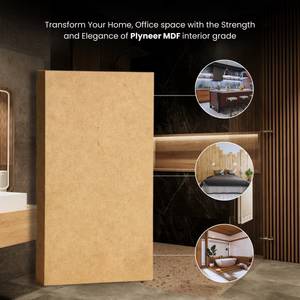
Medium-Density Fiberboard (MDF) is an engineered wood product manufactured by breaking down hardwood or softwood residues into wood fibers, often combining it with wax and a resin binder, then forming it into panels by applying high temperature and pressure. This process results in a remarkably consistent and versatile material ideal for a multitude of applications.
Key Features & Benefits:
Types of MDF:
MDF comes in various thicknesses and finishes to suit different needs. Common types include:
Considerations:
Choose MDF for your next project and experience the benefits of its superior quality, versatility, and ease of use.